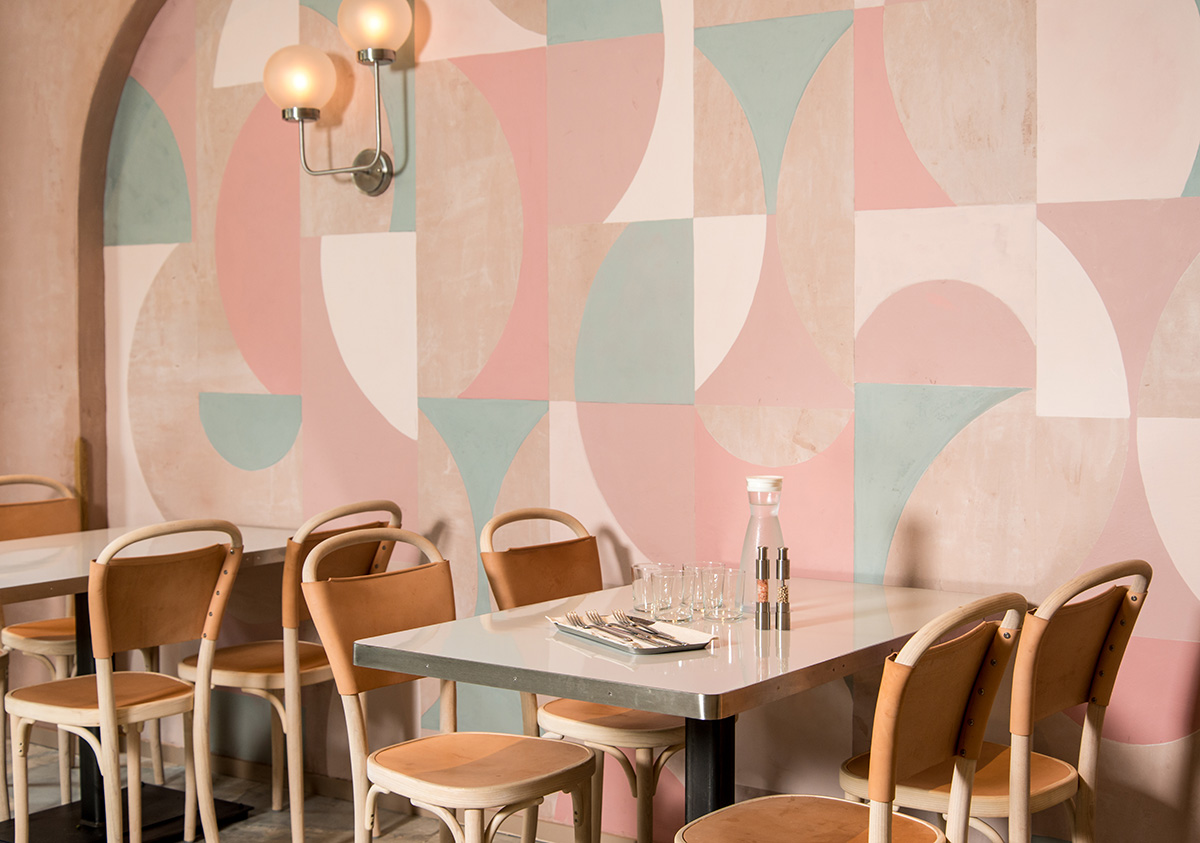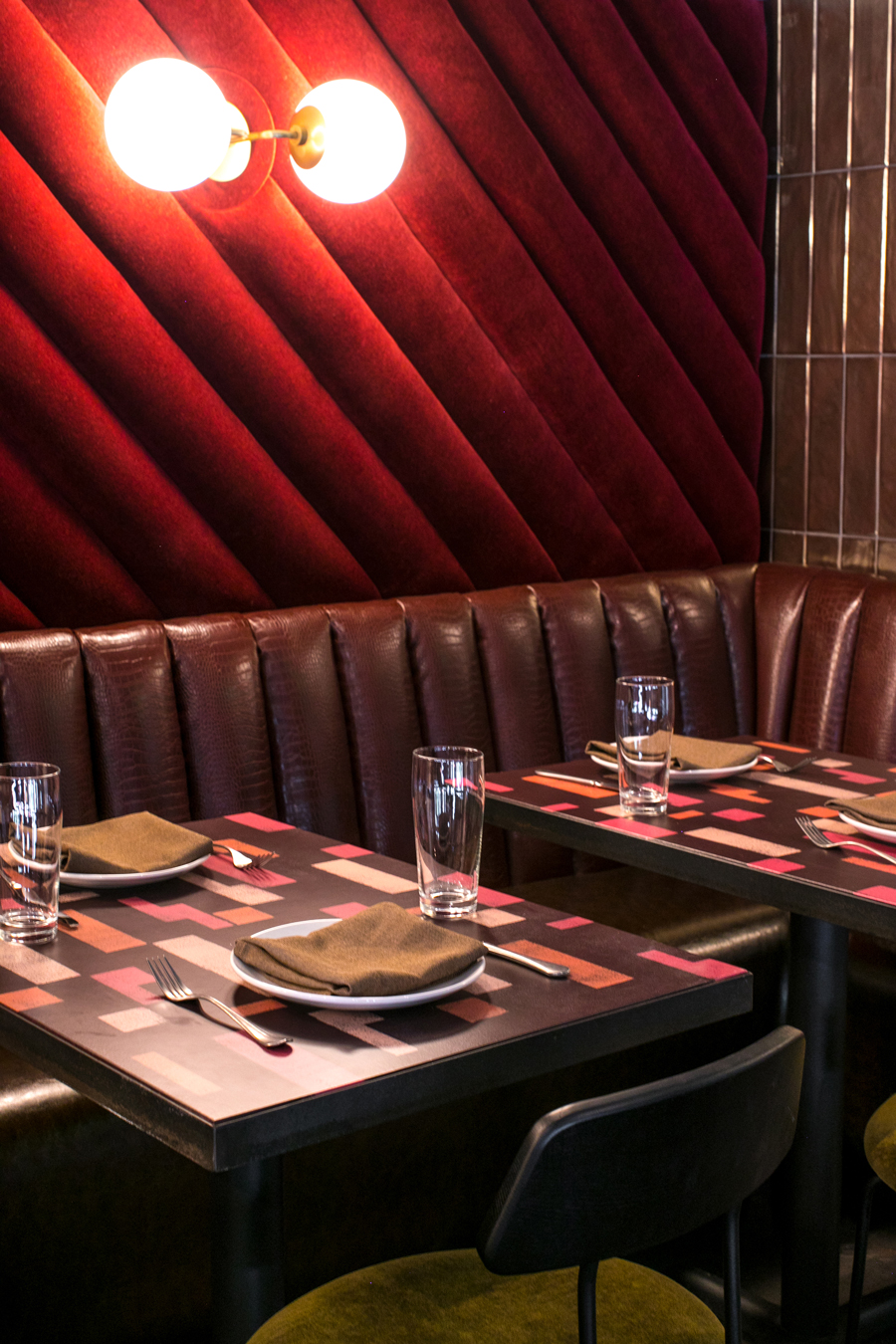
Photograph by Mia Yakel
In 1970s design, more is more. The Me Decade was anything but understated—bell bottoms, sideburns, and the Bee Gees, anyone?—and that playfulness was evident in homes and restaurants, too, with bold colors and daring materials like brass and terrazzo. And while midcentury modern has had its recent resurgence, it’s now clear that the 70s are back, baby. For proof, step inside any number of Atlanta’s newest restaurants.
Restaurant designer Elizabeth Ingram points out that there’s more than one side to 70s style. One facet of that style is the earthy, naturalistic touches offered by plants, rattan, and honey-hued wood. There’s also the glam, disco side of the 70s, with copious velvet and geometric patterns.
For a while, 70s decor all but disappeared. “We were living in a bit of a period where sleek, minimalistic, modernism was the big factor, and we lost, I think, some of that radical experimentation that was happening in the 70s,” says Liset Robinson, associate chair of interior design at Savannah College of Art and Design.

Photograph by Asher Moss
Now, though, sleek is no longer en vogue. That 70s look is evident all around Atlanta. It’s in the terrazzo countertops at the recently opened Big Softie and forthcoming Falafel Nation, the hanging plants and their macramé baskets at Watchman’s Seafood and Spirits, and the wicker peacock chairs in the Hotel Clermont’s lobby. It’s even down in Serenbe, where the newly opened fast-casual restaurant Halsa, designed by Smith Hanes, features a mural painted by Tommy Taylor in an oh-so-70s blush and teal geometric pattern.

Photograph by Mia Yakel
One of the most obvious nods to the 1970s in Atlanta restaurant design is the den inside Ford Fry’s BeetleCat, which opened in 2015. Designed by Ingram, the den features wood paneling, mustard barstools, and shaggy wall art. If you’re a 90s kid, it may remind you of the basement where Eric and the gang hung out in That 70’s Show, but for Ingram and Fry, it was about capturing a bygone era. “Ford and I were nostalgic for that time that goes back to our youth, and, at least for me, the early 70s have that kind of sense of innocence,” she says. “There’s a lot of possibility.”

Photograph by Andrew Thomas Lee
In 2017, Ingram went all in on the 70s again with the coffee and taco shop Muchacho, where navy and orange racing stripes adorn on walls and lush greenery occupies every available space. Ingram’s latest project, Iberian Pig Buckhead, has a more subtle design, but the retro vibe is still apparent, with heavy gold drapery complementing eggplant banquettes and geometric patterns on the tables.

Photograph by Heidi Geldhauser
So why are 70s resonating so strongly today? One possibility: politics. Back then, there was a scandalized president and women were taking to the streets to demand control over their bodies and equal pay. Sound familiar?
“I mean, not to get too heavy or deep, but I do think that maybe there’s a little bit of an echo effect there,” Ingram says.
Of course, there’s also the fact that people who grew up in the 1970s want to memorialize their youth. Hanes designed Fry’s newest restaurant, Little Rey, to be clearly retro, with a breezeway hearkening to a 1970s drive-in and more than a dozen plants hanging from the ceiling in a variety of wicker baskets (the latter are reminiscent of these vintage photos). The intended effect, he says, is one that brings comfort.
“People who are in their 40s and 50s lived in the 70s,” Hanes says. “Although they were really young, there is something inside of that era for people of those ages that they just kind of subconsciously remember.”













